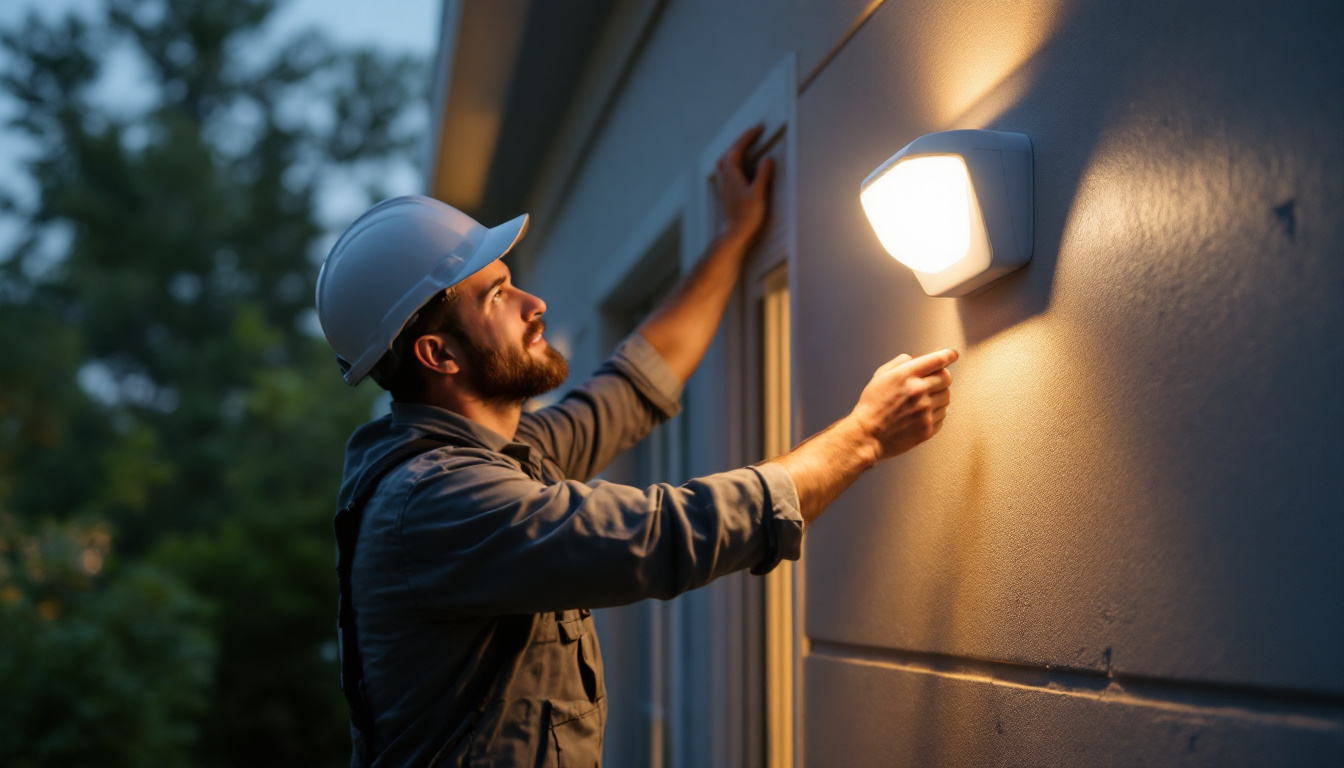
IP ratings, or Ingress Protection ratings, are crucial for determining the durability and suitability of electrical equipment in various environments. These ratings indicate the level of protection provided against solid objects and liquids. For lighting contractors, understanding these ratings is essential, particularly when working in specialized environments like greenhouses.
The IP rating system consists of two digits. The first digit ranges from 0 to 6, indicating protection against solid objects, while the second digit ranges from 0 to 8, indicating protection against liquids. An IP65 rating, for example, signifies that the equipment is dust-tight and protected against water jets, making it an ideal choice for outdoor and humid environments.
For lighting contractors, selecting fixtures with an IP65 rating is particularly important when dealing with greenhouses. These structures often experience high humidity levels and occasional water exposure, making it essential for lighting fixtures to withstand such conditions. An IP65-rated light fixture ensures that moisture will not compromise its functionality, thereby reducing maintenance costs and ensuring longevity.
Moreover, the reliability of IP65-rated fixtures extends beyond mere functionality; it also impacts the overall productivity of the greenhouse. When plants receive consistent and adequate lighting, they are more likely to thrive, leading to better yields for growers. This reliability can also translate to energy savings, as fixtures that are less prone to failure require less frequent replacement and maintenance, allowing contractors to focus on other critical aspects of their work.
In greenhouses, the right lighting can significantly influence plant growth and health. LED grow lights, for instance, are commonly used due to their energy efficiency and ability to emit specific wavelengths of light that plants need for photosynthesis. However, without adequate protection against moisture and dust, these lights can fail prematurely.
Using IP65-rated fixtures ensures that the lighting system remains operational in the challenging environment of a greenhouse. This reliability not only enhances plant growth but also improves the overall efficiency of the greenhouse operation. Additionally, the integration of smart lighting systems with IP65 ratings can further optimize growth conditions by allowing for automated adjustments based on environmental factors such as humidity and temperature. This technological advancement not only maximizes plant health but also supports sustainable practices by minimizing energy consumption and resource waste.
Choosing IP65 wet-rated lighting for greenhouse applications offers numerous benefits that lighting contractors should consider. Understanding these advantages can help contractors make informed decisions that enhance their service offerings.
One of the most significant benefits of IP65-rated lighting is its enhanced durability. These fixtures are designed to withstand harsh conditions, including high humidity and water exposure. This durability translates to fewer replacements and repairs, ultimately leading to cost savings for both contractors and their clients.
Moreover, the robust construction of IP65-rated fixtures often includes materials that resist corrosion and other forms of degradation, further extending their lifespan. This reliability is crucial in maintaining the operational efficiency of a greenhouse. In addition to resisting moisture, many IP65 fixtures are also built to endure temperature fluctuations, which are common in greenhouse environments. This resilience ensures that the lighting remains functional and effective, regardless of external weather conditions, thereby supporting optimal plant growth year-round.
Safety is paramount in any electrical installation, and using IP65-rated lighting contributes to a safer working environment. These fixtures are designed to prevent water ingress, which can lead to electrical hazards. By minimizing the risk of short circuits and electrical failures, contractors can ensure a safer environment for both workers and plants.
Additionally, the use of high-quality, well-sealed fixtures reduces the likelihood of accidents caused by malfunctioning lights. This focus on safety can enhance a contractor’s reputation and build trust with clients. Furthermore, IP65-rated lighting often features shatter-resistant materials, which not only protect the fixtures from accidental damage but also safeguard workers from potential injuries caused by broken glass. This added layer of safety is particularly important in bustling greenhouse settings where equipment and personnel are in constant motion.
Energy efficiency is a critical consideration for any greenhouse operation. IP65-rated lighting fixtures, particularly LED options, are designed to consume less power while providing adequate illumination. This efficiency not only reduces energy costs but also contributes to a more sustainable operation.
By incorporating energy-efficient lighting solutions, contractors can help their clients meet sustainability goals while also enjoying the benefits of lower utility bills. This aspect of modern lighting solutions is increasingly important as more businesses prioritize eco-friendly practices. Additionally, many IP65-rated LED fixtures come with advanced features such as dimming capabilities and smart controls, allowing for further customization of lighting conditions based on specific plant needs or growth stages. This adaptability not only enhances plant health but also maximizes energy savings, making it a win-win for both contractors and their clients in the long run.
The landscape of greenhouse lighting is constantly evolving, with new technologies and trends emerging regularly. Staying updated on these trends is essential for lighting contractors who aim to provide the best solutions for their clients.
One of the most notable trends in greenhouse lighting is the integration of smart technology. Smart lighting systems allow for remote control and automation, enabling growers to adjust light levels based on specific plant needs or environmental conditions.
These systems can be programmed to mimic natural light cycles, which can enhance plant growth and yield. For contractors, offering smart lighting solutions can set them apart from competitors and position them as forward-thinking professionals in the industry. Moreover, the data collected from these smart systems can provide invaluable insights into plant health and growth patterns, allowing growers to make informed decisions that can lead to more efficient operations and reduced energy costs.
Full-spectrum LED lighting is gaining popularity in greenhouse applications due to its ability to provide a range of wavelengths that cater to different stages of plant growth. This versatility allows growers to optimize their lighting for various crops, leading to improved results.
Contractors who stay informed about the latest advancements in full-spectrum LED technology can offer tailored solutions that meet the specific needs of their clients, enhancing their service offerings and client satisfaction. Additionally, full-spectrum LEDs are known for their energy efficiency and longevity compared to traditional lighting options, which can significantly lower operational costs over time. As sustainability becomes a priority in agriculture, the adoption of these energy-efficient lighting solutions aligns perfectly with the growing demand for environmentally friendly practices in the industry.
While the benefits of IP65-rated lighting are clear, there are challenges that contractors may face when implementing these solutions in greenhouses. Understanding these challenges can help in devising strategies to overcome them.
One of the primary challenges associated with IP65-rated lighting is the initial investment. High-quality fixtures often come with a higher price tag compared to standard lighting options. For some clients, this upfront cost can be a deterrent.
However, contractors should emphasize the long-term savings associated with reduced maintenance and energy costs. By presenting a comprehensive cost-benefit analysis, contractors can help clients see the value in investing in durable, efficient lighting solutions.
Installing IP65-rated fixtures may require specialized knowledge and skills, particularly in ensuring proper sealing and positioning to maximize their effectiveness. Contractors must be well-versed in the specific requirements for these installations to avoid potential issues.
Providing training for installation teams and staying updated on best practices can mitigate these complexities. This proactive approach not only enhances the quality of installations but also boosts client confidence in the contractor’s expertise.
The future of IP65 wet-rated lighting in greenhouses looks promising, with ongoing advancements in technology and design. Staying updated on these developments is crucial for contractors who want to remain competitive in the industry.
As technology progresses, the materials used in lighting fixtures continue to evolve. New materials that offer improved durability, lightweight designs, and enhanced thermal management are being developed. These advancements can lead to even more efficient and long-lasting lighting solutions for greenhouses.
Contractors should keep an eye on these innovations, as they can provide opportunities to offer cutting-edge solutions to clients, further solidifying their position in the market.
With the growing emphasis on sustainability, integrating IP65-rated lighting with renewable energy sources, such as solar power, is becoming increasingly feasible. This integration can provide greenhouse operators with a reliable and eco-friendly energy source, significantly reducing their carbon footprint.
Contractors who can facilitate this integration will not only meet the demands of environmentally conscious clients but also contribute to a more sustainable future for the industry.
In the ever-evolving landscape of greenhouse lighting, staying updated on IP65 wet-rated solutions is essential for lighting contractors. Understanding the significance of these ratings, the benefits they offer, and the challenges associated with their implementation can empower contractors to provide superior service to their clients.
As technology continues to advance, embracing new trends and innovations will ensure that contractors remain competitive and relevant in the industry. By prioritizing durability, safety, and energy efficiency, lighting contractors can enhance their reputation and contribute to the success of greenhouse operations.
Ultimately, the commitment to staying informed and adapting to changes in the market will position lighting contractors as trusted partners in the growth and sustainability of greenhouse environments.
Ready to upgrade your greenhouse lighting solutions with IP65 wet-rated fixtures? Look no further than LumenWholesale for all your lighting needs. We provide contractors with high-quality, specification-grade lighting products at unbeatable wholesale prices. With our direct-to-consumer approach, you’ll enjoy superior lighting products without the inflated markups often found at local distributors. Our extensive selection is designed to meet the highest industry standards, ensuring reliable and high-performance lighting for your greenhouse projects. Plus, with free shipping on bulk orders, you can get premium lighting at the best value — without hidden fees or compromises. Don’t miss out on the perfect blend of quality, affordability, and convenience. Visit LumenWholesale today and experience the best in wholesale lighting.

Discover innovative cost-saving strategies for lighting contractors with LED motion sensor lights.

Discover how unusual ceiling fans can provide a competitive edge for lighting contractors.

Discover how lighting flowers can provide a competitive advantage for lighting contractors.

Discover the essential checklist lighting contractors use to select the best solar lamps for patios.